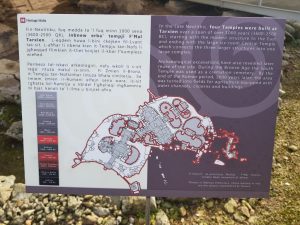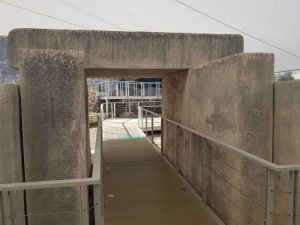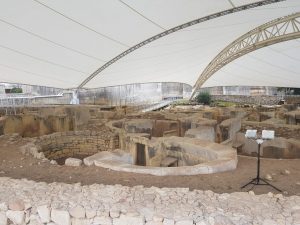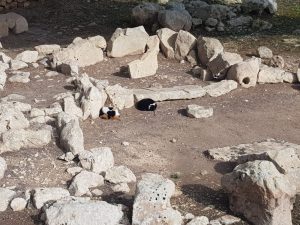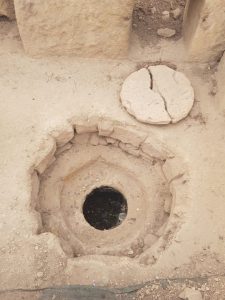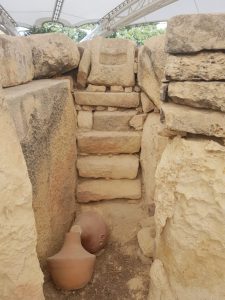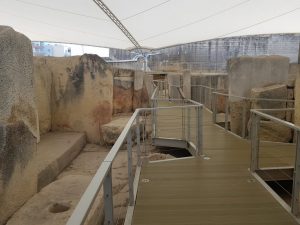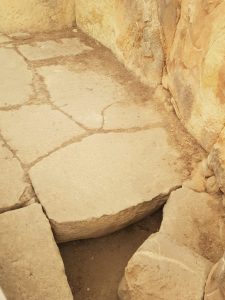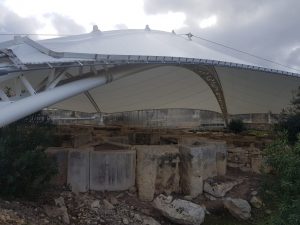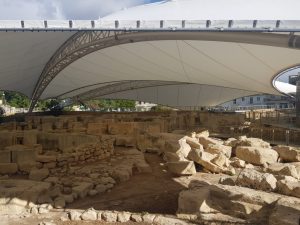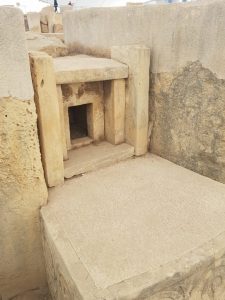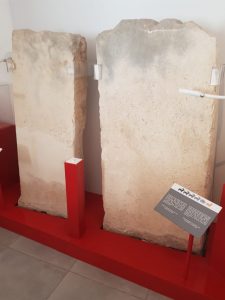Malta – South Eastern Region – Tarxien Temples
The Tarxien Temples are four megalithic structures which were constructed between 3600 and 2500BC, although were then repurposed between 2400 and 1500BC. The map above shows just how complex the structures are in their size and layout.
The site was discovered in 1914 after a farmer ploughing his field reported finding large stones. The farmer would have known for a long time about these irritating stones interrupting his farming arrangements, but in 1913 the Tarxien Hypogeum had been discovered nearby and he thought that this site might have a similar archaeological interest. He was right.
If I’m being honest, this really doesn’t help. All over the site there are more modern reconstructions of what the temple would have looked like. In this instance it’s apparent what is old and what is new, but in other parts of the site it’s confusing. In places, there were deliberate attempts to make the newer additions look original, which has all taken away from the experience. The 1950s restoration was also botched as they decided to use concrete to top off the stones, which has now damaged the original limestone.
There’s a large canopy over the site to avoid any deterioration of the exposed stone.
Cats have plonked themselves over parts of the site, knowing that they’re unlikely to be disturbed since they’re in an area that the public can’t get to.
This chamber was discovered in 1921 by Thomas Ashby and was secured by the stone lid which is located next to it. I can imagine the excitement that Ashby must have had whilst nervously opening up the lid to see the delights that lay within. And I can also imagine his irritation when he discovered that the chamber was empty.
Steps coming down into the temple.
Visitors can walk all the way around the site on an elevated walkway, and then also through the site.
This is the floor of the temple, made from thick stone and so not just the compacted earth floor that might otherwise have been expected.
More views over the site.
This cubbyhole was opened up and the archaeologists found flint knives and burnt animal bones inside.
Some of the stones have been taken inside into the small museum area located by the ticket office, which has ensured that they don’t get too worn by the weather and local elements. If you use your imagination, and primarily read the description by the side, you can see boats and rafts on the stone which is on the right hand side. This is of note as it might be one of the earliest representations of a boat which is in existence anywhere.
I have a rather limited knowledge of ancient temples, with “rather limited” perhaps being better defined as “no knowledge at all”. It was an interesting site and I liked how visitors can walk around the site on the walkways, but I didn’t have much of a clue what I was looking at. The leaflet given to visitors has four items to look for, although three of these aren’t even at the site (they’re at the National Museum in Valletta, where I did actually see them) and there’s a limited sense of history for me looking at a copy that someone had made thirty years ago.

